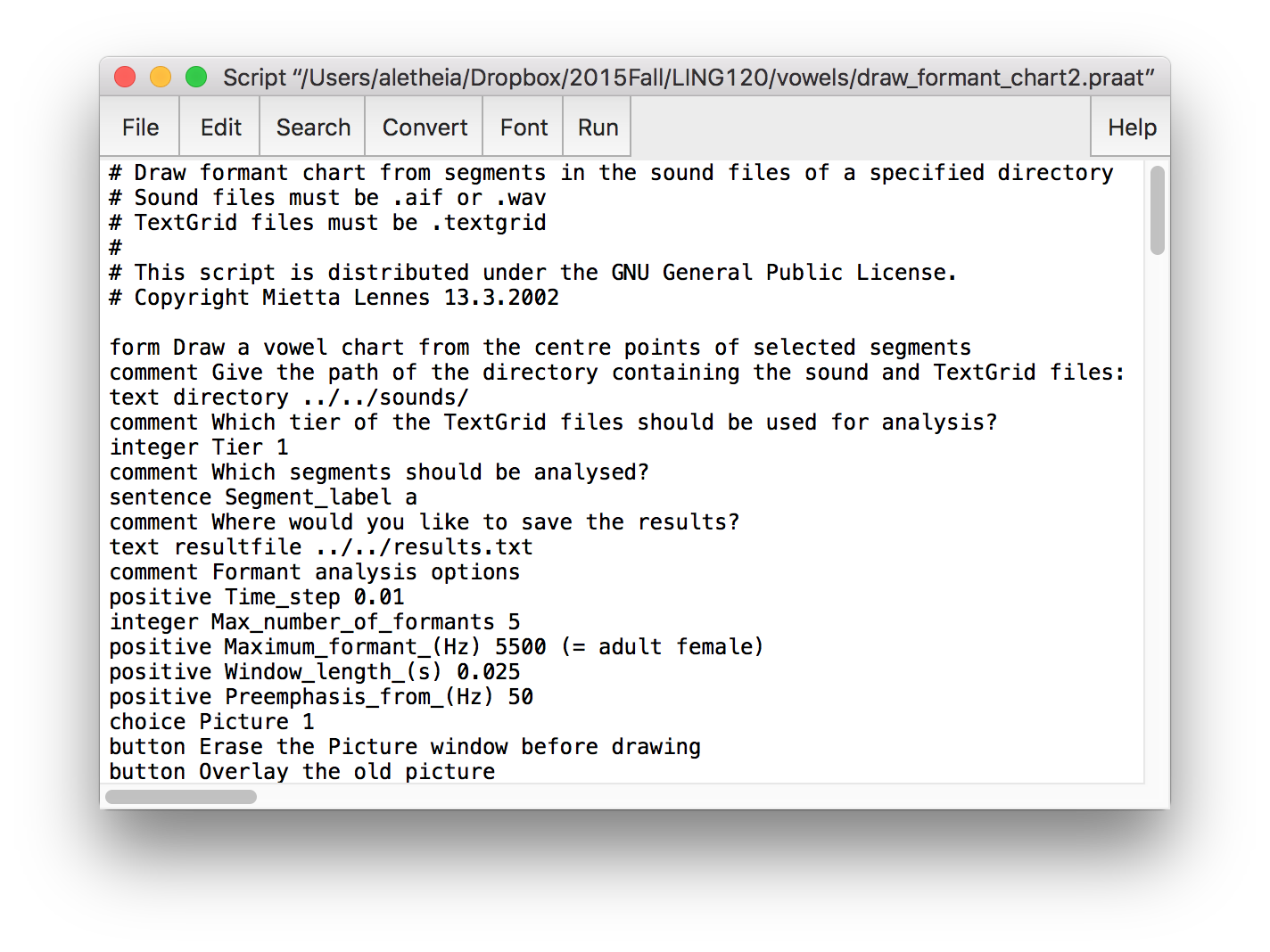

We still have to use an appropriate "open" command. Note that it just gives us a file path, it doesn't open it for us. Again, the dollar sign at the end of its name should indicate that it will return a string, representing the path to the desired file. Our scripts up until this point have not used a GUI.īut Praat does give us the option to use a GUI file picker for our scripts with the "chooseReadFile$" command. For example, on a Mac, you can double-click an app to open it (the GUI way), or you can open a console and type "open /Applications/Firefox.app". When you deal with the command line (aka the terminal / console / command prompt), you're interacting with the computer via some type of text entry method. It stands for Graphical User Interface, and refers to the windowed point and click environment we're all used to. Have we talked about what a GUI is yet? Well, it's a good term to know. What's the value of Column 1 row 2? How many rows are there? etc.) Open files via GUI: Allow the user to pick the file Otherwise, the commands in the "Open" menu are much more useful: They will create an object (like a Table object, or a Strings object), and Praat has a bunch of commands we can use to query and modify that information (i.e.

If you just want to copy the text from a file "wholesale", then "readFile$" is a good thing to know about. That means that you'll have to manually chop up the file how you wish, which is not a whole lot of fun and not a good use of your time. Unless I'm mistaken, the "readFile" or "readFile$" commands will read in a text file, and leave the parsing to you. The chapter on files in the Praat Scripting Tutorial is one that I think is actually a bit lacking. Well I could keep a tab-separated spreadsheet of specific settings for those people, and use those values in the script. Let's say while marking up a file in a TextGrid, I found that I had to adjust the formant settings for different people. Also check out the commands for reading in spreadsheets, they are VERY useful. We should now have "Sound be" open and selected, and 'sound1' should contain a reference to its object number. Wd$ = homeDirectory$ + "/Documents/praatTutorial/sampleData/"
#PRAAT SCRIPT DURATION MANIPULATION DOWNLOAD#
(If you don't have the accompanying files, go to the Download page from the menu above) Build up your path in a smart way, and read in a sound file with the Read from file command. Let's keep working with the files in the folder praatTutorial/sampleData/. As far as I can tell all of these commands can be used in Praat scripts, taking a path as an argument. Make sure the object window is showing, and click the Open menu on the top bar. This means that typically when you read a file, you aren't changing it in any way, until you "write" (though in other programming languages you have to make sure to close the file or bad things can happen, Praat does this for us). When you "read" a file, you open it and copy its contents into memory. In a matter of seconds a spreadsheet with thousands of lines could be regenerated. Forgot to do something? Edit a line and run the script again.
#PRAAT SCRIPT DURATION MANIPULATION FULL#
I had a bunch of folders full of wav files and TextGrids that I had carefully marked up, and I was happy that I could make a script to get and format the numbers for me. Are you excited? Call me what you will, but I was when I finally got my scripts opening files.


 0 kommentar(er)
0 kommentar(er)
